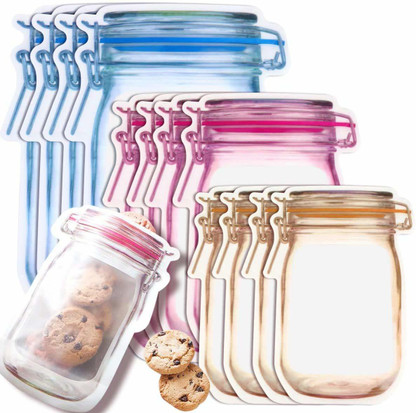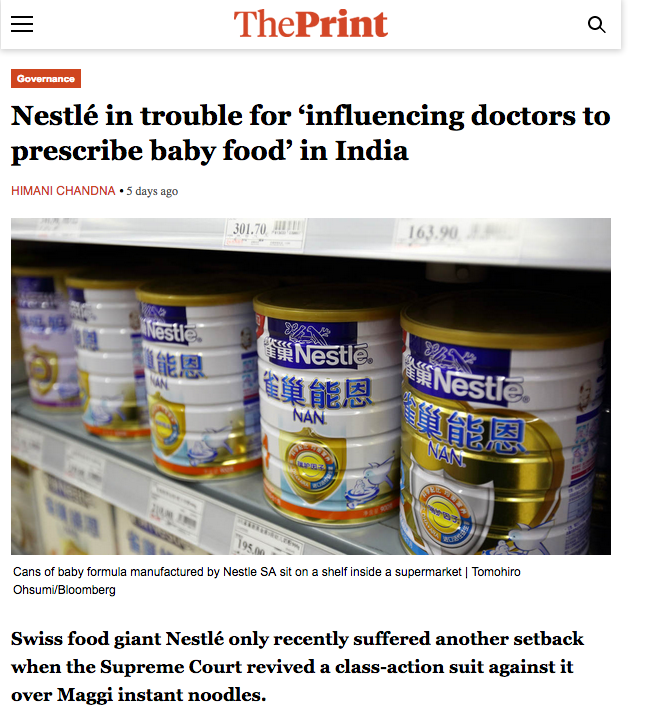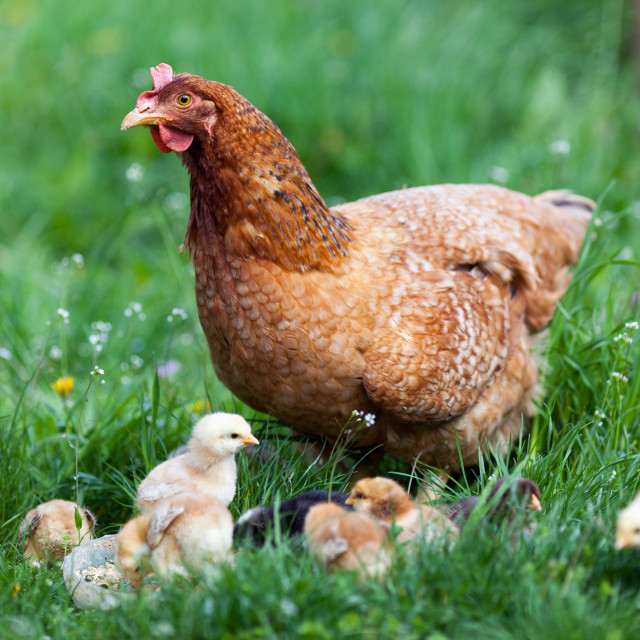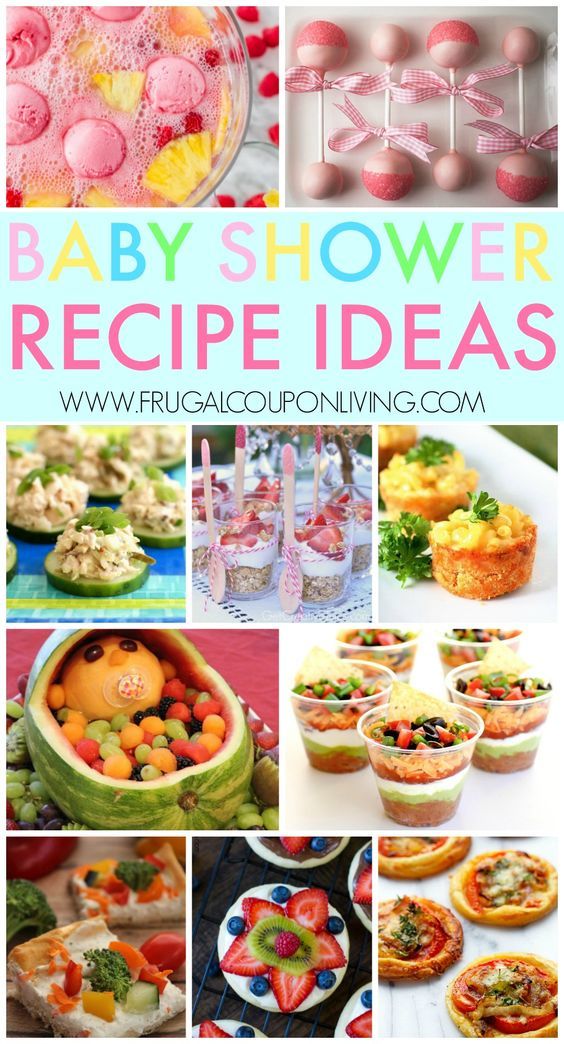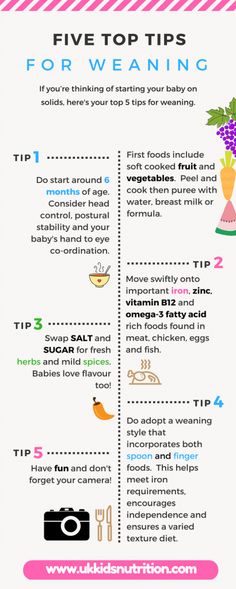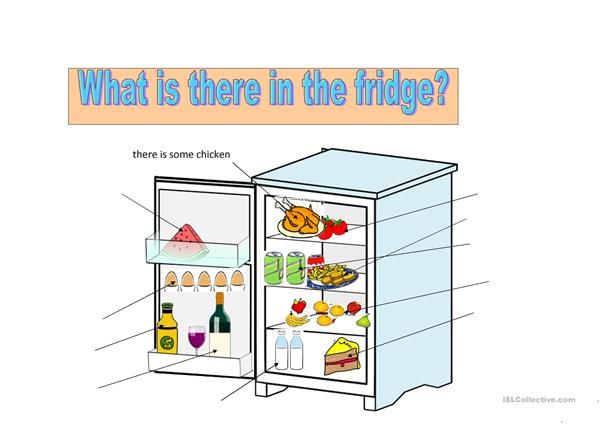Homemade baby food recipes for 8 month old
Top 10 Baby Food Recipes for 8- to 10-Month-Olds
1
Image: Maggie Meade, Wholesome Baby Food and WholesomeBabyFood.com
Effortless Apples and Chicken
Ingredients:
- 1/3 cup boneless chicken or turkey, chopped and cooked
- 1/4 cup soft cooked apple (no skin or seeds), or 1/4 cup natural applesauce
- Handful of diced carrots (optional)
- Pinch of cinnamon (optional)
Directions:
- Place chicken with cooked apple in a food processor or blender.
- Add cinnamon.
- Puree or mash to a consistency suitable for baby, adding water to thin if necessary.
Quick Tip! This recipe freezes with mixed results. It may thaw to a gritty and watery texture. For best results reheat in a saucepan so that ingredients may easily be recombined.
2
Image: Maggie Meade, Wholesome Baby Food and WholesomeBabyFood.com
Peachy Keen Sweet Potatoes
Ingredients:
- 1 sweet potato, peeled and diced
- 2 ripe peaches, pitted and cubed
- Water
- Pinch of cinnamon or ginger
Directions:
- Preheat the oven to 375° F
- Combine sweet potato and peaches in a shallow baking dish and add just enough water to slightly cover the food.
Sprinkle a pinch of cinnamon or ginger over the dish and stir, cover with foil.
- Bake for approximately 20 minutes or until peaches and sweet potatoes are fork tender—check on the water level often.
- Once fully baked, reserve any remaining water and transfer sweet potatoes and peaches to a bowl to cool.
- Puree or mash as needed for baby’s texture preference.
May be frozen but some wateriness may occur upon thawing—try adding some plain whole milk yogurt to reconstitute.
Quick Tip! You can double, triple or even quadruple this recipe and turn it into a delicious holiday side dish for the grown-ups and bigger kids in the family. Simply mash all the ingredients together, add a ½ cup whole milk yogurt per each doubling of the recipe and then return the mix to a baking dish. Drizzle with maple syrup, sprinkle on some chopped nuts and warm in a heated oven for 15 minutes.
3
Image: Maggie Meade, Wholesome Baby Food and WholesomeBabyFood. com
com
Lentil, Sweet Potato and Apple Salad
Ingredients:
- 3 medium sweet potatoes
- 1 large apple (Macintosh or Granny Smith work well!)
- 2 cups water or broth (low sodium, all natural chicken or vegetable broth) for the lentils
- 1 cup water (to steam sweet potatoes and apples)
- 1 cup yellow lentils (or any dried type of lentils)
- 2 Tbl. olive oil
- 1 tsp. cinnamon
- 1/4 tsp. (or a small pinch) cardamom
Directions:
- Peel the sweet potatoes and cube in 1 inch cubes.
- Peel, core and dice the apple into small dices.
- Bring 2 cups of water or broth to a boil in one saucepot and add the lentils.
- Return the lentils to boil and then turn heat to low.
- Simmer lentils on low heat for 20 to 30 minutes or until the lentils have become soft.
- Add 1 cup of water to the other saucepot and insert a steamer basket into the pot.
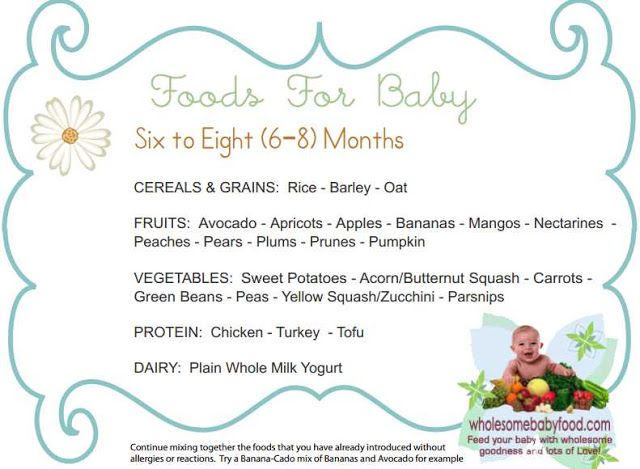
- Add the sweet potato cubes and diced apple to the steamer basket and steam for approximately 20 minutes, until the sweet potatoes are fork tender.
- Once the lentils and sweet potatoes and apples are cooked, remove from the stove top and drain excess liquid from each saucepot.
- Allow foods to cool to warm.
- Once foods have cooled, combine the foods together in a large bowl with 2 Tbl. of olive oil.
- Sprinkle in the spices and toss well.
Quick Tip! Mash the salad and serve as a finger food meal or puree for babies who are not enjoying lumps and bumps. Sweet potatoes, apples and lentils are a powerful combination. This salad is great for grown-ups too and will serve up lots of iron, protein and vitamin C as well as vitamin A.
4
Image: Maggie Meade, Wholesome Baby Food and WholesomeBabyFood.com
Parsnip, Apple and Carrot Mash
Ingredients:
- 4 parsnips
- 4 carrots
- 2 apples
- Pinch of cinnamon
- 1 Tbl.
 olive oil
olive oil
Directions:
- Peel and dice carrots, parsnips and apples then add them to a bowl with olive oil and a pinch of cinnamon, stir to combine.
- Dump the contents of the bowl into a lightly oiled baking dish and bake at 400° F for approximately 25 minutes or until all the foods are fork tender.
- When finished roasting, allow to cool and then puree as needed, adding water to thin if required.
While this dish may be frozen, upon thawing you might find a mushy or gritty texture. For best results, freeze in portions that have not been pureed and then thaw and puree as needed.
Did You Know? Parsnips contain a good amount of calcium, vitamin C and even folate. These root vegetables have a delicious nutty and sweet taste that most babies love.
5
Image: Maggie Meade, Wholesome Baby Food and WholesomeBabyFood.com
Sweet Potato Scramble
Ingredients:
- 1/2 cup sweet potato puree
- 2 egg yolks (you may use whole eggs if you wish)
- Butter or olive oil
- Pinch of pepper
Directions:
- Warm the butter or olive oil in the frying pan.
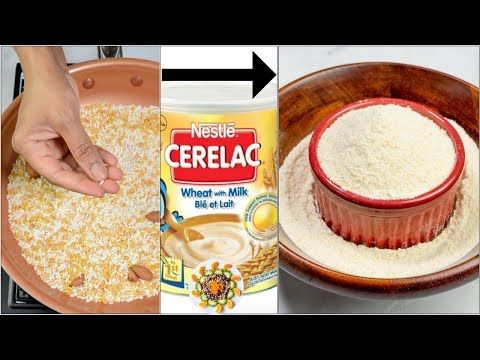
- Combine sweet potato and eggs in a bowl and whisk together.
- Add mixture to the warmed pan and scramble with a wooden spoon until thoroughly cooked.
- Puree or mash as needed to reach baby’s texture preference.
Not recommended for freezing but makes a perfect finger food and can be stored in the fridge for up to three days.
Did You Know? While eggs may have a bad reputation for being high in cholesterol, making eggs a part of baby’s diet will not lead to dangerously high cholesterol levels. Babies need more fats and even some cholesterol for healthy growth and development.
6
Image: Maggie Meade, Wholesome Baby Food and WholesomeBabyFood.com
Baked Apples
Ingredients:
- 3 or 4 large apples (Macintosh, Gala or Braeburn all work well.)
- Butter (optional)
- Cinnamon (optional)
- Brown sugar and raisins (optional but a must add if you will be serving to the “big kids”)
Directions:
- Core the apples but leave the peel on.

- Wipe center insides of each apple with butter if desired and/or add a few drops of water-sprinkle some cinnamon over the apples if you like.
- Add raisins and a tiny dash of brown sugar to the inside of each apple if you like.
- Place the prepared apples upright in a baking pan. Add 2 inches of water to the pan and cover with foil.
- Bake at 400° F for approximately 40 minutes or until skin puckers and/or fruit begins to bubble.
- Once apples have baked, allow them to cool in the baking pan then transfer the apples to a large mixing bowl.
Did You Know? Baked apples may fall apart while baking—this is perfectly fine! You may turn them into applesauce or gently mash them for finger foods.
7
Image: Maggie Meade, Wholesome Baby Food and WholesomeBabyFood.com
Creamy Peachy Rice
Ingredients:
- 1 cup cooked brown rice
- 1 cup yogurt
- 1/2 cup peach puree
- Pinch of cinnamon
Directions:
- Combine all the ingredients in a medium saucepan.
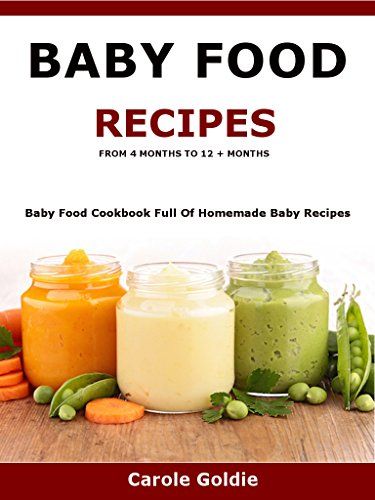
- Bring ingredients to a gentle simmer and continue to simmer on low until creamy and well blended.
Freezes with mixed results
Quick Tip! This recipe can be used to make any quick and easy rice pudding. Use whole milk to replace the yogurt if desired and try adding raisins and figs.
8
Image: Maggie Meade, Wholesome Baby Food and WholesomeBabyFood.com
Yogurt Meals
Ingredients:
- 1 large tub plain, whole milk yogurt
- Assorted fruits and vegetables, pureed or mashed
Directions:
- Combine yogurt with a variety of baby’s favorite fruits or veggies, divide into portions and freeze or store in the refrigerator.
Quick tip! Here are some more yogurt combinations to try:
Peary Creamy Oats: Blend yogurt with pear sauce and cooked oatmeal
Creamy Sweet Potatoes and Rice: Blend yogurt with sweet potatoes and rice—add a pinch of cinnamon if you like.
Green Beans with Yogurt and Applesauce: Blend yogurt with green beans and applesauce.
9
Image: Maggie Meade, Wholesome Baby Food and WholesomeBabyFood.com
Easy Pumpkin and Apples
Ingredients:
- 1 cup fresh pumpkin, peeled and diced *
- 2 cups apples, peeled, cored and chopped *
- 1 cup water
- Pinch of cinnamon
Directions:
- Combine all the ingredients in a medium saucepan.
- Bring ingredients to a gentle simmer and continue to simmer on low until soft and fork tender
- Allow to cool then mash or puree if needed.
Freezes with mixed results. It may be watery upon thawing, stir well to reconstitute
Did You Know? Pumpkin and apples will offer an abundance of vitamin A, vitamin C, folate and even calcium into baby’s diet. This combination just can’t be beat and would be great to help boost iron absorption; serve with meats whenever possible.
*You may use natural ready-made applesauce and canned pumpkin if desired; be sure to use plain pumpkin and not pumpkin pie mix.
10
Image: Maggie Meade, Wholesome Baby Food and WholesomeBabyFood.com
Sweet Potato Fries
Ingredients:
- 1 pound (approximately 4 medium) sweet potatoes
- Olive oil
- Spices like cinnamon, ginger, nutmeg or cardamom
Directions:
- Preheat oven to 400° F. Scrub sweet potatoes clean then peel them—leave the skin on if you feel baby can tolerate them.
- Cut sweet potatoes into strips or other shapes that you may then cut down after baking.
- In a large bowl, add about 1/4 cup of olive oil and pinches of the spices you prefer.
- Toss the cut up sweet potatoes into the bowl and stir so that the potatoes are drenched with the olive oil mix.
- Dump sweet potatoes onto a baking sheet, drizzle remaining olive oil over the potatoes.
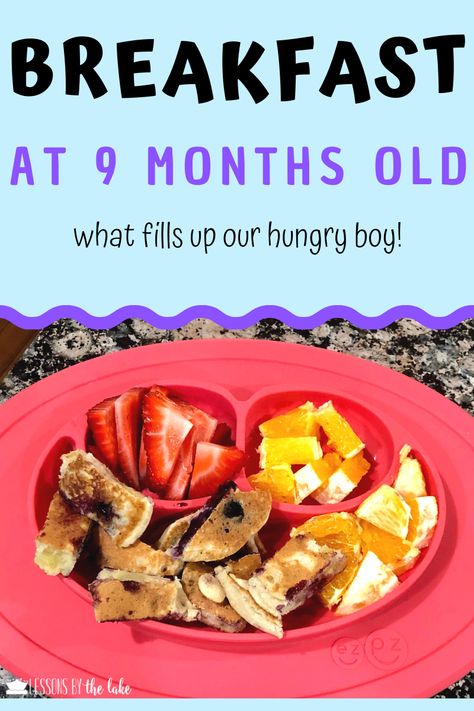
- Stir and swirl the potatoes on the baking sheet before placing in oven.
- Bake for approximately 30 to 45 minutes or until tender.
*All recipes excerpted from The Wholesome Baby Food Guide and WholesomeBabyFoodGuide.com
Plus, More from The Bump:
Baby-Food Making 101
Creative Ways to Store Baby Food
Life Changing Feeding Gear
save article
Join
Already a member? Log In
Sign up for weekly updates to help you on the road to parenthood!
Choose Your Journey
Want a personalized experience?
Download The Bump App for daily pregnancy and newborn updates with our free app
Next on Your Reading List
Homemade baby food and puree recipes
- Community
- Getting Pregnant
- Pregnancy
- Baby names
- Baby
- Toddler
- Child
- Health
- Family
- Courses
- Registry Builder
- Baby Products
Advertisement
Photo credit: Thayer Allyson Gowdy for BabyCenter
Once your baby starts eating solid food, a whole new world opens up for them.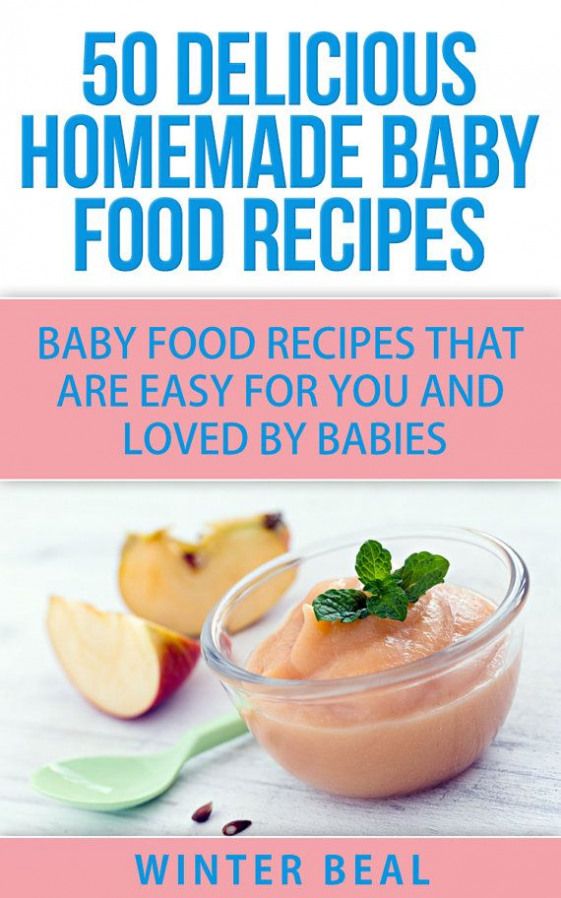 Whether you're going the traditional spoon-feeding route or trying baby-led weaning, you're likely starving for ideas for what to feed your baby. Making your own baby food can seem daunting, but with a little planning, it's super easy – and it can be cheaper than buying prepared baby food.
Whether you're going the traditional spoon-feeding route or trying baby-led weaning, you're likely starving for ideas for what to feed your baby. Making your own baby food can seem daunting, but with a little planning, it's super easy – and it can be cheaper than buying prepared baby food.
From thin purees to full finger-food meals, here are some baby food recipes for every stage of your solid feeding journey.
Photo credit: Thayer Allyson Gowdy for BabyCenter
Baby food recipes for 6 to 8 months
Babies are typically ready to start eating solid foods around 6 months. Signs that they're ready include having good head control, being able to sit up, and showing an interest in food. If your baby watches you while you eat, opens their mouth when you offer them a spoonful of food, or even tries to grab food off your plate, those are good indicators that they're ready.
You can start your baby off with just about any pureed, single-ingredient food – like bananas, berries, or many of the foods listed below.
The exceptions are the top allergenic foods, such as fish, wheat, eggs, soy, peanuts, tree nuts, sesame, and dairy. It's best to give your baby low-allergy foods at the very beginning, like apple or chicken puree. Once you know they can handle those foods, you can start introducing potentially allergenic foods.
When introducing your baby to a common allergen, serve it for three to five days before introducing another type of food. That way, if your baby has an allergic reaction, it'll be easier to tell what caused it.
Try these baby food recipes for your 6- to 8-month-old:
- Apple and pear sauce
- Baby oats with prunes
- Butternut squash puree
- Green pea puree
- Mango and banana puree
- Peach or nectarine puree
- Roasted pears
- Sweet potato puree
- Turkey or chicken puree
- Whipped cauliflower
- Yogurt and berry swirl
- Zucchini puree
Photo credit: BabyCenter
Baby food recipes for 9 to 12 months
By the time your baby is about 9 months old, they're ready for some more complex dishes – often, you'll find yourself feeding them whatever you and the rest of your family are eating.
While you're expanding your baby's eating horizons, remember they still don't have that many teeth and can't chew hard or crunchy produce like raw carrots – and be on the lookout for choking hazards, like whole grapes and popcorn. But there are still plenty of other options for babies at this age: flaky salmon, ground beef, roasted vegetables, baked potatoes, pasta dishes… the list goes on.
If your baby doesn't like new textures, don't worry. The key at any age is to offer your baby a variety of foods and to keep trying. Even if they don't like the food at first, keep offering it to them – sometimes, you may have to offer your baby a food up to 20 times before they'll accept it.
By this age, your baby is also typically ready to start trying out finger foods, like O-shaped toasted oat cereal, banana slices, or well-cooked pasta cut into bite-size pieces, about a ¼ of an inch in size. Several of the recipes below, like guacamole, hummus, and whipped cauliflower, make perfect dips to pair with finger foods so your baby can start learning to eat independently. It'll be messy, of course, but it's a great time for them to practice their hand-eye coordination and skills with their newfound pincer grasp.
It'll be messy, of course, but it's a great time for them to practice their hand-eye coordination and skills with their newfound pincer grasp.
If you're ready for some more food adventures with your baby, try adding spices to their meals. While it isn't recommended to give babies added salt or sugar in their diet until they're at least 2 years old, fresh herbs and other spices are fair game (and a little added salt is okay). Try adding cinnamon to their oatmeal or rosemary to their ground beef.
And if you really want to experiment with new flavors, your baby may even enjoy a bit of spicy food – but avoid foods with a lot of added sugar, salt, or processing. (If you're a fan of spicy food yourself and ate it while breastfeeding, your baby might even have some built-in tolerance for spice.)
Try these recipes for your 9- to 12-month-old:
- Asparagus risotto
- Baby guacamole
- Barley and mushroom mash
- Broccoli and cauliflower cheese
- Chicken curry with green beans and zucchini
- Coconut milk rice pudding with blueberry compote
- Homemade hummus
- Lentil and spinach stew
- Pasta with spinach and ricotta
- Oatmeal with apples
- Quinoa, black beans, and corn
- Rice with peas, carrots, and egg
- Root veggie mash
- Salmon, asparagus, and peas
- Shepherd's pie
- Smashed chickpea and butternut squash chili
- Tomato and avocado scramble
- Tropical fruit salad
If you're ever unsure about what to feed your baby or how much food to give them at any age, check out our age-by-age guide to feeding.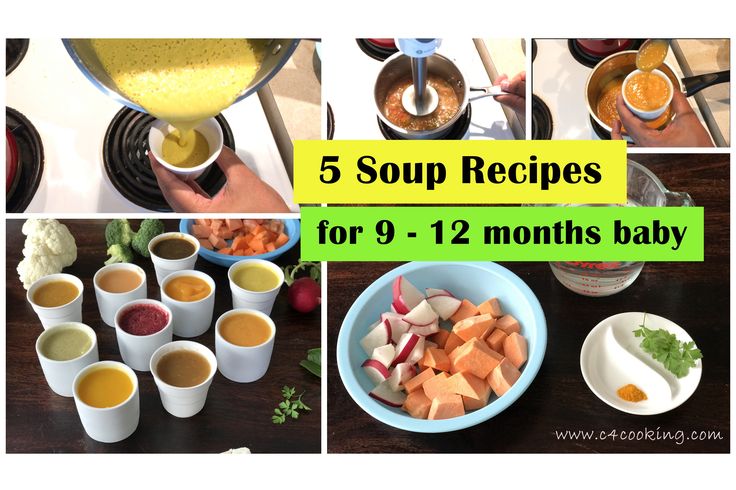
Was this article helpful?
Yes
No
Rebekah Wahlberg
Rebekah Wahlberg is an associate editor at BabyCenter, the world's number one digital parenting resource. She lives in Southern California with her silly dog Booger, where she enjoys hiking, yoga, and watching Netflix when she "should" be reading. Wahlberg is passionate about creating content that helps parents and parents-to-be equip themselves with everything they need to succeed.
Advertisement | page continues below
Baby puree at home: recipes
Baby puree from vegetables and fruits at home: cooking secrets
Vegetable and fruit puree often becomes the first meal of the baby after breast milk or formula, so many mothers prefer to cook it on their own. Although modern manufacturers convince us that baby food is devoid of preservatives and harmful additives, fresh vegetables and fruits are much healthier, especially when it comes to infant nutrition. Yes, and cooking baby puree at home is not so difficult. nine0005
nine0005
Vegetables or fruits?
Let's try to make baby puree for our beloved baby. Despite the fact that pediatricians of the last century recommended starting complementary foods with fruits, it is better to first introduce the child to vegetables - modern doctors and nutritionists have come to this conclusion. Boiled vegetables do not irritate the gastrointestinal tract, are better absorbed, satisfy hunger, do not cause allergies and increased gas formation. In addition, vegetables do not contain fructose, which irritates the pancreas. And one more weighty argument in favor of the fact that it is better to start with vegetables - fruits are tastier, and if the baby tries them first, he will refuse vegetables, because they will seem to him more insipid. nine0005
How to prepare baby vegetable puree
What can baby puree be made of? The ideal puree for the first feeding is from cauliflower or zucchini. A little later, you can introduce pumpkin, broccoli, carrots, potatoes and green peas. Before cooking, vegetables are washed well, peeled, cut into pieces and cooked - steamed, in the oven or in the usual way, in water. The first two methods are preferable because oven roasting and steaming preserve the vitamins, minerals, nutrients, and natural color in the vegetables. And most importantly - such vegetables are much tastier. Some nutritionists recommend boiling vegetables with their skins on before peeling them, so choose your own cooking method. nine0005
Before cooking, vegetables are washed well, peeled, cut into pieces and cooked - steamed, in the oven or in the usual way, in water. The first two methods are preferable because oven roasting and steaming preserve the vitamins, minerals, nutrients, and natural color in the vegetables. And most importantly - such vegetables are much tastier. Some nutritionists recommend boiling vegetables with their skins on before peeling them, so choose your own cooking method. nine0005
If you do have to cook vegetables in a saucepan, use an enamel pot, add less water and put the vegetables in boiling water. Boil until soft, but do not overcook vegetables and fruits, otherwise they will become tasteless and lose a lot of vitamins. Ready vegetables are chopped with a blender until smooth and slightly diluted with water, vegetable broth, breast milk or mixture to a gruel state, since the child does not yet know how to digest thick food. Small pieces of vegetables in puree sometimes cause the baby to refuse to eat, so the knives in the blender should be well sharpened, and if there is no technique, you can grind the vegetables through a sieve. Salt and spices are usually not added to baby vegetable puree, and if the baby is more than 6 months old, you can put a little butter in the puree. nine0005
Salt and spices are usually not added to baby vegetable puree, and if the baby is more than 6 months old, you can put a little butter in the puree. nine0005
A few rules for making baby puree at home
- Use only fresh vegetables and fruits.
- Water for cooking vegetables must be filtered or bottled.
- If you are using frozen foods, choose only whole fruits and vegetables as they retain the most nutrients.
- All utensils for preparing baby food should be perfectly clean, so if the knife falls on the floor, it should be washed well. Also, the presence of pets in the kitchen during the cooking process is not allowed. nine0026
- Avoid vegetables and fruits high in nitrates, such as spinach, lettuce, beets, melons, and watermelons, in infants' diets.
- Store-bought vegetables are recommended to be soaked in water to remove nitrates: 1-2 hours for this, up to 24 hours for potatoes.
- Mix sour-tasting fruits and berries with sweet fruits - for example, blackcurrant goes well with a banana or pear.
 Sour puree is unlikely to please the baby. nine0026
Sour puree is unlikely to please the baby. nine0026 - Give your child only fresh food, but yesterday's puree from the refrigerator is better to eat yourself.
DIY fruit puree for children
Children are more likely to eat fruit puree, because fruits are tastier and sweeter. Fruits contain a large amount of vitamins, minerals, trace elements, fiber and antioxidants, so they are very useful for a growing organism. However, fruits are strong allergens, especially berries, bananas, pomegranates and apricots, so they should be given with caution, watching the child's reaction. The most low-allergenic fruits are apples and pears, so it is better to start complementary foods with them, and then introduce all other fruits. First, the baby is fed with a one-component puree made from only one product, and then you can mix different vegetables and fruits, and not only among themselves. Very tasty combinations of fruits and vegetables, such as apples and zucchini, pumpkins and pears.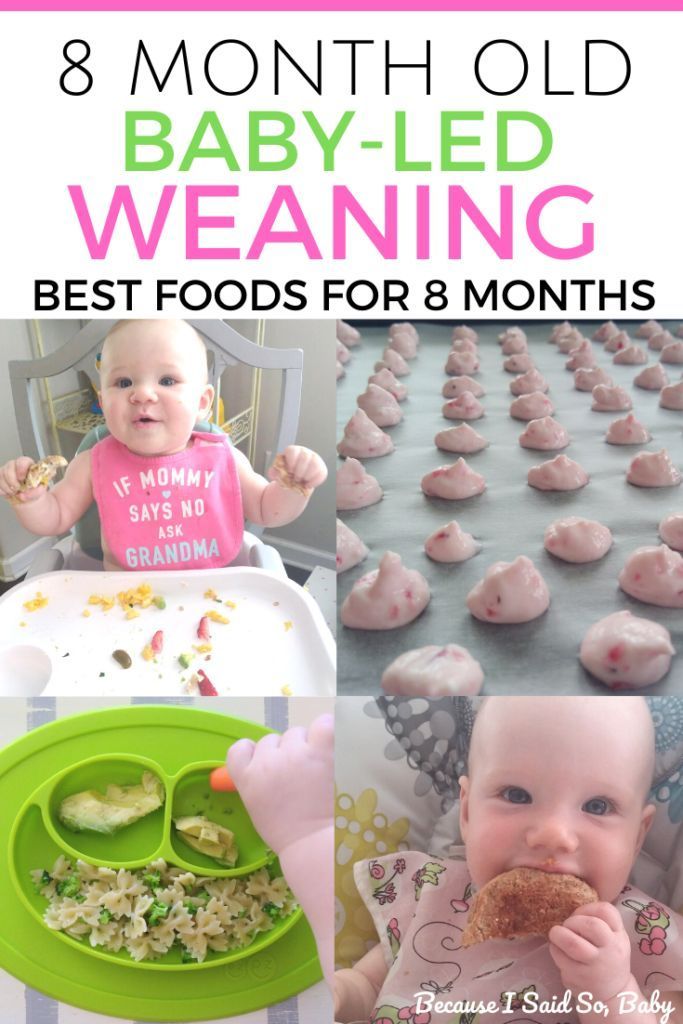 nine0005
nine0005
Fruits must be of good quality, without damage, ripe and juicy, and the rules for preparing fruits do not differ from the rules for cooking vegetables. Naturally, fruit puree is not sweetened with honey and sugar - the later the child learns the taste of sugar, the stronger his health will be.
Aromatic pumpkin puree
Babies love to eat pumpkin because of its pleasant sweet taste, besides pumpkin is very healthy. It contains a whole storehouse of various vitamins, including vitamin T, which normalizes the metabolism in the body. For pumpkin puree, small pumpkins are suitable, since large fruits are not as tasty and difficult to peel. nine0005
Cut the pumpkin in half, and then into small slices, one or two of which (depending on the appetite of the crumbs) cut into cubes. Boil the pumpkin in a double boiler or in water for 20 minutes, while warm, beat with a blender to a smooth puree and dilute if necessary with water or a mixture. Add oil and salt depending on the age of the child.
Gentle Broccoli Puree
One of my favorite homemade baby puree recipes is broccoli. This cabbage is extremely useful because it contains potassium, iron, calcium and other valuable substances. It has much more vitamin C than lemon, and the reason for its nutritional value is its high protein content. nine0005
Separate the broccoli into florets, wash thoroughly and steam for 20 minutes. Cabbage cooks faster in water - fresh broccoli will take 7 minutes, and frozen - about 15 minutes. Broccoli puree does not need much water, it should lightly coat the vegetables. After the cabbage becomes soft, chop it in a blender or pass through a sieve. If you're mashing for kids older than a year old, be sure to add butter - the little ones will gobble up broccoli on both cheeks! nine0005
How to make baby pear puree at home
Pear is a very delicate, tasty and healthy fruit that rarely causes intolerance. In addition to the high vitamin value, the pear has other beneficial properties - it facilitates digestion and removes toxins from the body.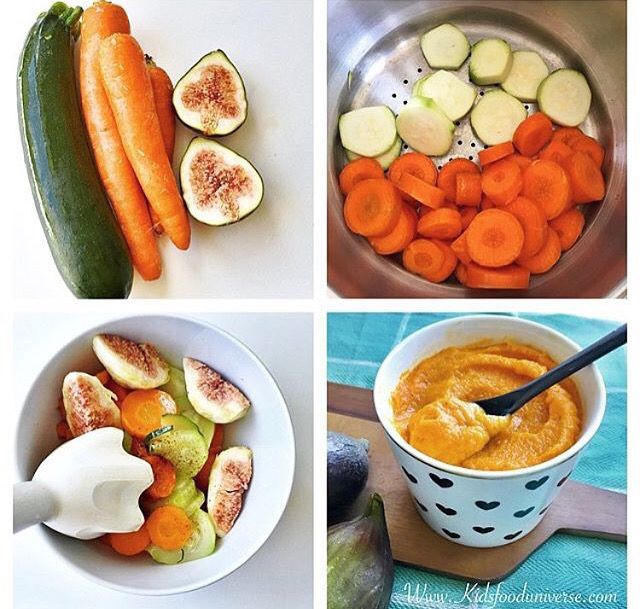
For baby food, choose green pears to reduce the risk of allergies, which are rare among babies. Peel the fruits from the peel and core with seeds, and then stew the pear in a bowl with a thick bottom in a small amount of water for 15 minutes. Let the pear cool slightly and puree it in a blender with a little of the remaining pear broth. For large kids, fruits can not be boiled, but add half a teaspoon of natural honey to the puree. nine0005
Zucchini and apple puree
Little gourmets will love this delicious puree, besides, zucchini is considered the most hypoallergenic vegetables, which, due to their high potassium content, have a beneficial effect on the heart. Apples contain iodine, iron and phosphorus, and due to the high concentration of vitamin C, apples help in the prevention of colds and viral infections.
Wash the zucchini and apples well, de-seed them, cut into pieces and cook in a saucepan for about 20 minutes, considering that the zucchini will cook 5 minutes faster. By the way, apples are steamed for 15 minutes, zucchini - 10 minutes. Next, vegetables and fruits are chopped in a blender, mixed and brought to a boil. For allergic children, this is the best side dish! nine0005
By the way, apples are steamed for 15 minutes, zucchini - 10 minutes. Next, vegetables and fruits are chopped in a blender, mixed and brought to a boil. For allergic children, this is the best side dish! nine0005
Exotic mango
Sometimes you can pamper your baby with exotic fruits - for example, make mango puree. This is a very delicate fruit with an original taste, containing 12 amino acids and improving sleep.
Choose only ripe fruits that are soft and reddish-yellow in color. Peel the mango from a thick skin and a large bone, put the pulp in a blender, add 2 tbsp. l. water and mash it, and then heat it in a saucepan for several minutes. For a baby up to a year old, it is better to give mashed potatoes with heat treatment to facilitate digestion, and older children can be fed raw mangoes. nine0005
Carrot and Potato Puree
Make normal potato puree without oil. Peel the carrots, grate them and stew them with butter and vegetable broth - about 1 tsp is required for 200 g of carrots. butter and 150 g of broth. When the carrot becomes very soft, wipe it through a sieve, and then put it on a plate, put mashed potatoes on the second half. Let the child choose whether to mix two types of puree for him or eat separately!
butter and 150 g of broth. When the carrot becomes very soft, wipe it through a sieve, and then put it on a plate, put mashed potatoes on the second half. Let the child choose whether to mix two types of puree for him or eat separately!
Pumpkin and apple puree
This sweet, sugar-free pumpkin-apple puree, cooked in a double boiler, is suitable for children who are already accustomed to “adult” food and are able to perceive a new unusual dish. It is better to take a pumpkin with a gray or green skin and with bright pulp - such fruits contain more vitamins and other useful substances. Apples are green because they have fewer allergens.
Cut pumpkin and apple flesh without peel or seeds into pieces, place in a steamer and cook for 20 minutes. Grind pumpkin, apples and raisins in a blender or by hand with a pusher if the child has already learned to chew. They say that this puree is very good for skin and hair, and you can check the truth of this statement yourself if you start feeding this dish to your baby. nine0005
nine0005
In autumn, you can take care of preparing vegetables for baby purees. Some vegetables, such as pumpkin, carrots and apples, are stored fresh, and zucchini, broccoli, berries are frozen in small portions, because due to frequent freezing and thawing, vegetables lose vitamins and become tasteless. You can roll up fruit and vegetable puree in jars, but this snack should not be given to babies. Remember that the taste of vegetables determines whether the baby will love them in the future, so try to prepare an appetizing and tender puree - for health and good mood! nine0005
Baby food at home: recipes, videos
Growing up a little person is a delightful process that cannot but please the parents of the crumbs. However, the first feeling that mom and dad face when it comes time to introduce complementary foods into a child's diet is confusion.
Which food is the most healthy, hypoallergenic and delicious? Most often, the first "real" meal of the crumbs after mother's milk and formula is vegetable or fruit puree.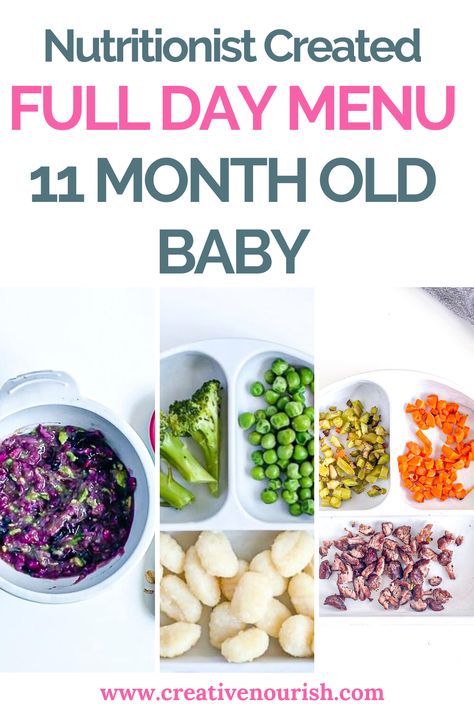 The choice of baby food on store shelves is very wide - each manufacturer tries to convince the buyer that jars with beautiful labels contain only natural products, there are no dyes, sweeteners and other harmful additives. A variety of "meals" for babies in factory packaging marked "3+ months." does not guarantee the true usefulness of the product that is inside. Every mother understands that complementary foods prepared on her own, from natural products, are much better for her child. nine0005
The choice of baby food on store shelves is very wide - each manufacturer tries to convince the buyer that jars with beautiful labels contain only natural products, there are no dyes, sweeteners and other harmful additives. A variety of "meals" for babies in factory packaging marked "3+ months." does not guarantee the true usefulness of the product that is inside. Every mother understands that complementary foods prepared on her own, from natural products, are much better for her child. nine0005
Another advantage of making your own baby food is that you can choose the best ingredients, wash fruits, berries or vegetables thoroughly, peel them well and remove damaged parts. In addition, the parents of the crumbs themselves can choose the way - how best to cook baby food: food can not only be boiled, but also baked in the oven or cooked in a double boiler.
It is also important that home-made baby puree is much tastier, it will undoubtedly be useful for a growing organism and will not cause allergies! Even the simplest children's dish, prepared by mom, keeps the warmth of caring hands and cannot be compared with expensive dishes from the store. nine0005
nine0005
What should be the correct complementary foods for children? Of course, you should start with one ingredient (such purees are called one-component purees), then move on to more complex options. Experts emphasize that the most suitable product for the first "dish" is zucchini. Cauliflower can also be considered neutral. Gradually it will be possible to introduce carrots, pumpkins, potatoes, broccoli and green peas. At the first stage of the introduction of complementary foods, it is better to give preference to vegetable purees and switch to fruit purees when the child already treats “serious” food well. nine0005
The basic rules and principles of preparing high-quality baby food yourself:
- it is best to take fresh products for preparations: fruits from the tree, berries from the bush and vegetables from the garden are much more useful than those that have already been in the refrigerator for a week. If there are no seasonal vegetables at the time of preparation, the use of frozen foods is acceptable, but in this case, try to give preference to whole fruits - they retain the greatest amount of nutrients; nine0026
- only filtered water should be used for cooking vegetables;
- Preparing baby food requires, if not separate dishes, then thoroughly washed ones.
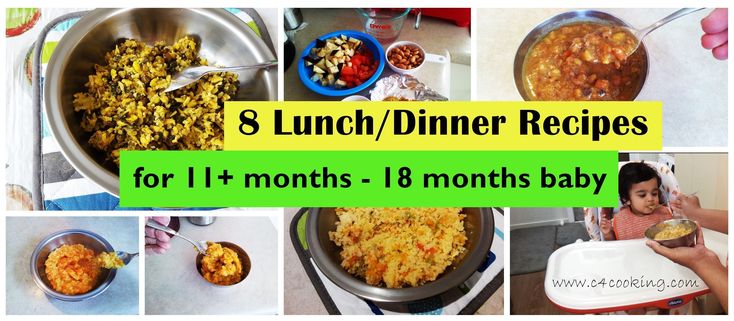 Do not, for example, cut vegetables on a meat board. If there is a dog or cat in the house, then you need to restrict her access to the kitchen when food is being prepared;
Do not, for example, cut vegetables on a meat board. If there is a dog or cat in the house, then you need to restrict her access to the kitchen when food is being prepared; - It is not recommended to use vegetables and fruits in the diet of infants, in which the content of chemical additives is consistently high. These often include watermelons and melons, beets, spinach and lettuce; nine0026
- It is better to add water to vegetables purchased on the market before cooking: put carrots, potatoes, zucchini and cauliflower in filtered water for a couple of hours - this will remove nitrates;
- do not leave excess mashed potatoes for the next meal: the child should be given only freshly prepared food, and "yesterday's" mashed potatoes are best eaten by adults or given to pets;
- you can choose cream, boiled egg yolk, grated cheese or finely chopped dill as an additive to puree - this will diversify dishes for children from 8 months; nine0026
- try it! Children's food can and should be enjoyed by an adult.

There is another question that often worries parents: is it permissible to preserve baby puree and how to do it correctly? After all, such complementary foods for the developing body of a small child must be prepared daily for one or even two or three years: until the baby is ready to eat adult food from the common table. Not every mother has the time and opportunity to prepare baby puree daily, but you don’t want to buy food for the baby in the store. In addition, it is obvious that in the winter-spring period it is almost impossible to find fruits and vegetables grown without the addition of chemicals. The answer to the question is quite simple: the requirements for the conditions for preparing baby food are very strict (keeping the temperature, sterilizing jars, etc.), but using an autoclave solves all problems: all that is required is to load jars with blanks into the autoclave for 20 minutes and set temperature 120 degrees. After cooling, it is better to store baby food in a dark, cool place for about 12 months, daily delighting the child with homemade homemade food. nine0005
nine0005
Pumpkin puree: tender and aromatic
Pumpkin is a delicious vegetable that is good for babies. This fruit has a beneficial effect on digestion, is well absorbed by the child's body and is rich in various vitamins: A, C, B, B2, E, PP, T. In addition, the carotene content in pumpkin is 5 times higher than in carrots!
Baby pumpkin puree has a sweet taste, so the kids eat this dish with great pleasure. For preparations, it is better to buy small whole pumpkins, as they usually taste better than large ones and are easier to peel. nine0005
- Rinse pumpkin well under running water, peel, cut in half, remove seeds.
- Then you need to cut the fruit into small cubes, put in a saucepan and pour water. Cooking time after boiling - 20 minutes. You can also steam pumpkin: it will retain more nutrients with the same cooking time.
- The next step is to beat the cooked pumpkin with a blender until the consistency of a gentle puree. If the dish turned out to be thick, add water or milk (milk mixture).
 nine0026
nine0026 - Vegetable oil and salt are added to pumpkin puree to taste, but these additives should be used with caution: only if they are acceptable for the age of the child.
For babies older than 8 months, pumpkin puree is supplemented with other fruits and vegetables, and also added to porridge.
Broccoli puree: simplicity and elegance
Broccoli is not just cabbage, but a storehouse of vitamins and microelements! Beautiful on the outside and fantastic on the inside - the high content of protein and vitamin C (there is more in broccoli than in citrus!) deserves special attention. There are many articles on the Internet about the benefits of broccoli, and preparing this product is not at all difficult. nine0005
To prepare this type of cabbage for baby food, you need to choose the highest quality product: the inflorescences must be unopened, green, moderately elastic.
- Broccoli should be washed, cut into pieces and boiled. Steaming will take 20 minutes, in water - faster: fresh cabbage should be boiled for a little more than 5 minutes, and frozen - at least 10.
 When cooking, do not pour a lot of water, it should only cover the vegetables a little.
When cooking, do not pour a lot of water, it should only cover the vegetables a little. - When the cabbage is cooked, take it out, transfer it to a blender bowl and grind to a puree state, add a little warm boiled water. nine0026
- Add salt and butter to taste.
Pear puree: a fragrant dessert
It's no secret that babies love fruit puree - almost all children like sweet dishes. The pear is a suitable option for the first one-component fruit food - a sweet fragrant fruit that has a high concentration of vitamins, stimulates digestion and almost never causes allergies.
If you want to cook a safe puree for your child at home, then it is best to choose green pears, these are the fruits that are considered to be the least allergenic. nine0005
- Fruit must be peeled, core removed with seeds, cut into cubes.
- Transfer the pear to a heavy-bottomed enamel saucepan, add a little water and simmer over low heat for 15-20 minutes.

- Then transfer to a blender bowl and puree until smooth. If the puree is too thick, add a little warm boiled water.
- You can dilute the dish with milk or formula - it depends on the taste preferences of the baby. nine0026
A similar recipe is used for applesauce. In the future, try to combine these two fruits in one dish.
Classic apple-zucchini puree
A good appetite of a baby pleases every mother, but little gourmets are often capricious, and it is not easy to please them. Zucchini and apple puree is a classic combination of products that will diversify the baby's menu already in the fifth or sixth month of life.
This complementary food contains only hypoallergenic products, has a positive effect on the functioning of the heart, and stimulates the strengthening of the immune system. nine0005
- Selected products should be thoroughly washed, peeled, core removed from apples.
- Cut zucchini and apples into cubes, put fruits in a cooking pot first - they should cook for 5 minutes longer, and then vegetables.
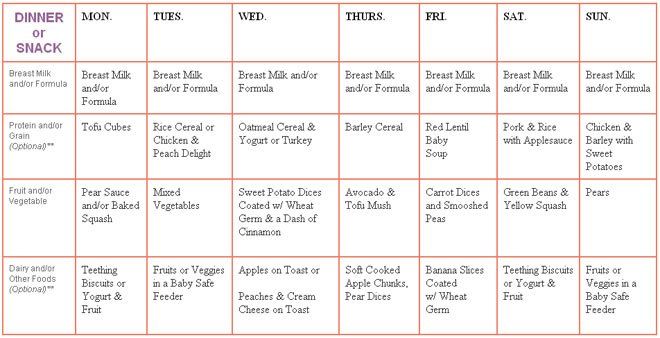 The total cooking time is 20 minutes.
The total cooking time is 20 minutes. - When the products become soft, they must be ground to a puree with a blender.
- To taste - dilute with water, add salt, oil.
This puree can be considered a meal on its own for the little ones or a delicious side dish for older kids. nine0005
Colorful Carrot-Potato Puree
For many parents, carrots and potatoes are the simplest and most understandable type of complementary food for the baby. However, if you cook and serve standard products a little differently than usual, you can improve the traditional taste of a classic dish.
Young potatoes should not be chosen for baby puree - they contain a lot of starch. Carrots, on the contrary, it is better to buy young ones.
- Wash and peel the vegetables thoroughly and cut into cubes. nine0026
- It is better to cook mashed potatoes and carrots by steaming, vegetables should be boiled separately. Cook until tender, 20 minutes on average.
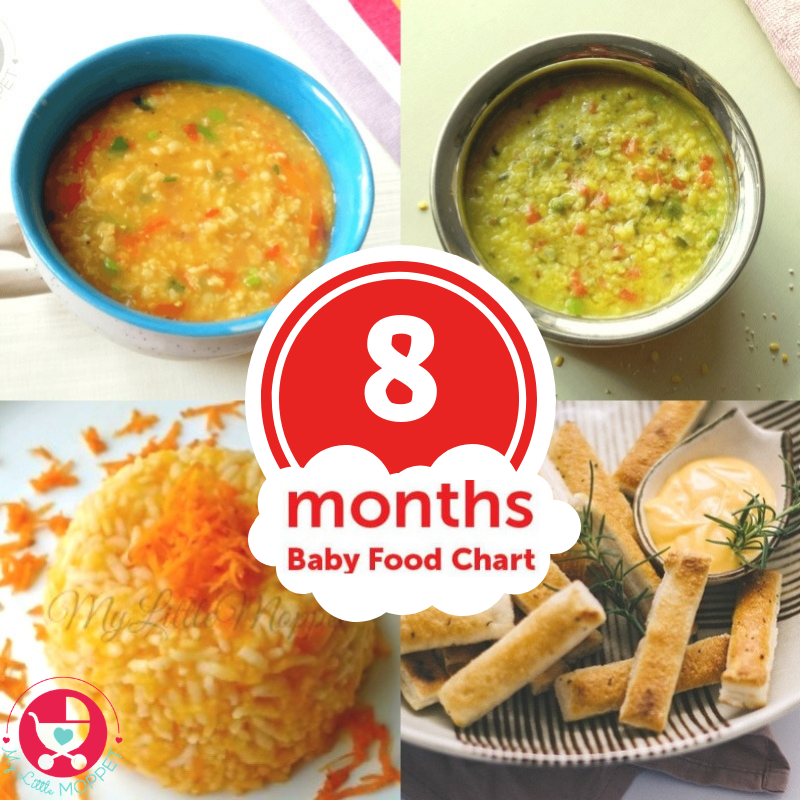
- Separately puree the vegetables in a blender, diluting with warm water if necessary.
Both types of puree are beautifully placed on a plate without mixing: the child can decide for himself whether to mix food or eat separately.
Exotic variety: mango puree
Tropical fruits should not be offered to a small child before the age of 7-8 months and only if there was no allergy to other foods.
Mango is an aromatic fruit with an original pleasant taste. This fruit helps to overcome colds, reduce inflammation in the body, improve sleep and normalize the functioning of the stomach.
To feed the baby, ripened fruits should be selected - quite soft, yellow-red in color.
- Fruit should be peeled and pitted, cut into cubes. nine0026
- Put the raw mango into a blender, purée, transfer to a heavy-bottomed pot and simmer for a few minutes.
Older children may be offered uncooked mango puree. This fruit is completely independent - no need to add sugar or water!
Sweet pumpkin puree with apple
This puree is called sweet, as both pumpkin and apples are high in sugar.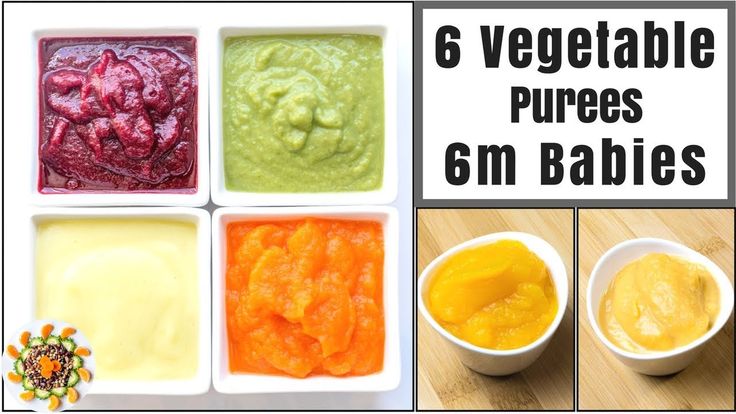 Such a dish is well suited as a dessert for children who already eat “serious” food well - vegetable purees and cereals. nine0005
Such a dish is well suited as a dessert for children who already eat “serious” food well - vegetable purees and cereals. nine0005
In addition, such complementary foods are a great option for the autumn-winter period: seasonal products contain enough choline, a lot of fiber, natural proteins and vitamins (groups A, B, C, E, etc.), zinc, sodium, calcium and only!
- Pumpkins and apples must be peeled, peeled and seeds removed, cut into cubes and sent to a double boiler.
- Cook for about 20 minutes until the food is soft. Then place them in a blender bowl, add raisins and chop. If the child chews well, mash everything with a fork, and leave the raisins whole. nine0026
Hearty puree with celery and turkey
For older kids, meat is added to vegetable dishes - turkey fillet is an excellent option for developing a child's taste preferences. Appetizing and fragrant meat puree includes only three ingredients: celery root, turkey fillet, butter.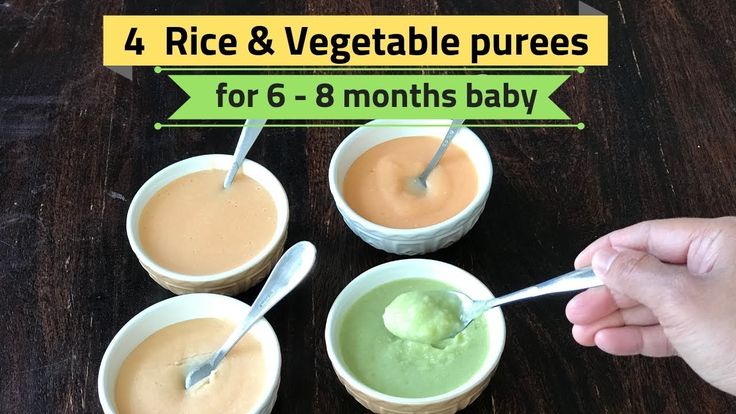
The proportion of meat and celery should be approximately 10:1, the amount of butter to your taste.
- The turkey fillet must be boiled in the "second stock" for about 20 minutes after boiling. nine0026
- Wash, peel and cut the celery root into cubes and put into the boiling broth 10 minutes before it is done.
- After cooking, beat the turkey and celery with a blender until puree, if necessary, add the broth.
- Salt to taste and add oil. For one children's serving, 3-5 grams of butter is enough.
A child from early childhood will begin to get used to full-fledged homemade food without the addition of preservatives and harmful components, and will grow up healthy and strong. In summer and autumn, parents can make preparations: prepare potatoes, carrots, beets, pumpkins and apples for storage (these products are stored for a long time - they do not need to be frozen), freeze berries and seasonal fruits, or roll ready-made mashed potatoes into jars! Homemade baby food without unnecessary flavor enhancers and salt is the best complementary food, warmed by mom's love.


